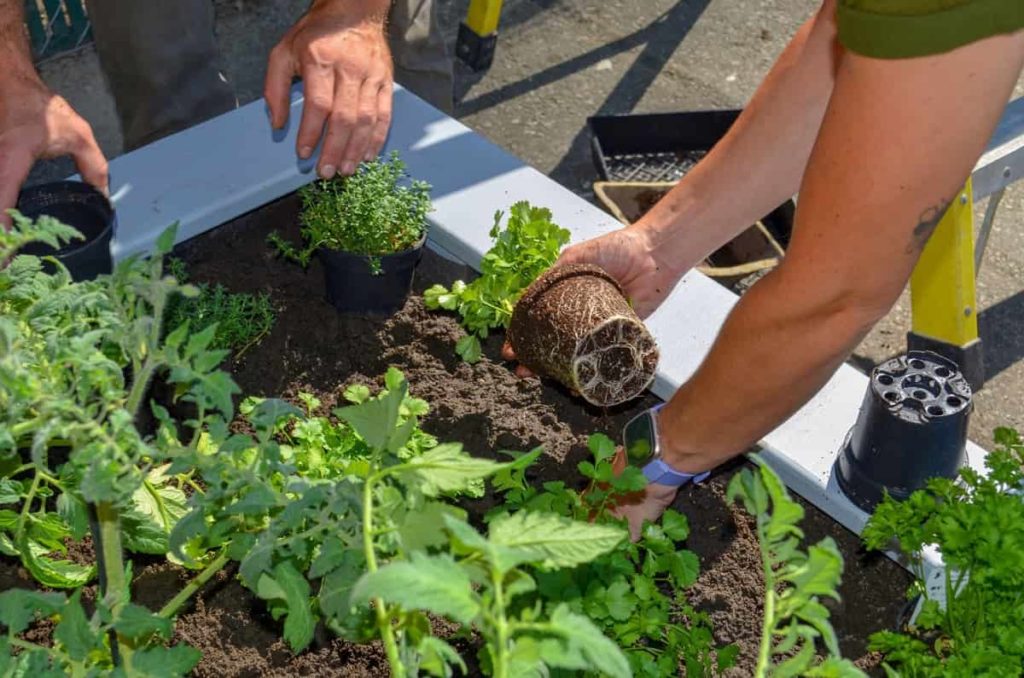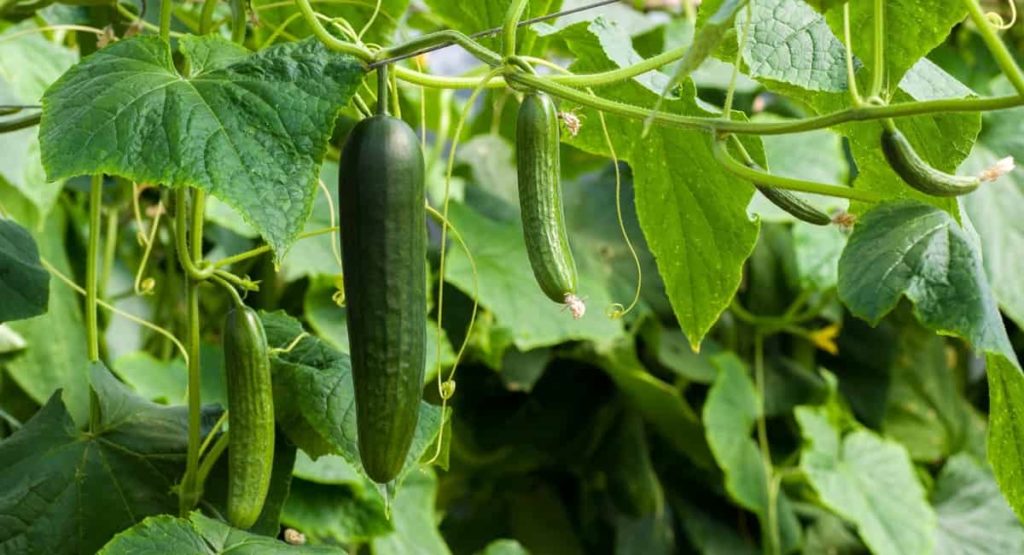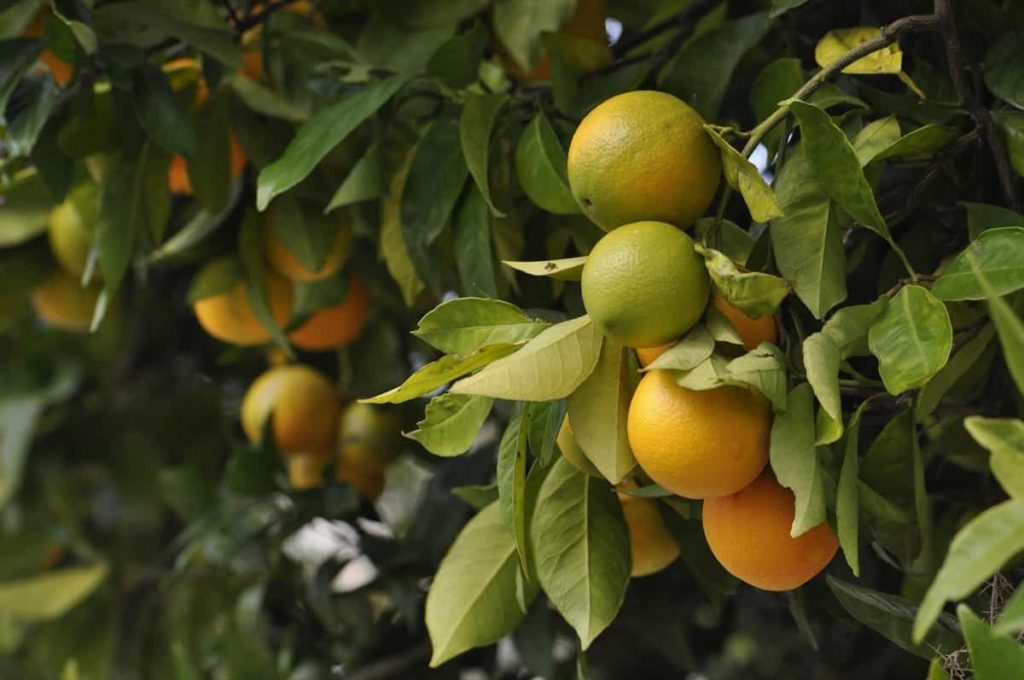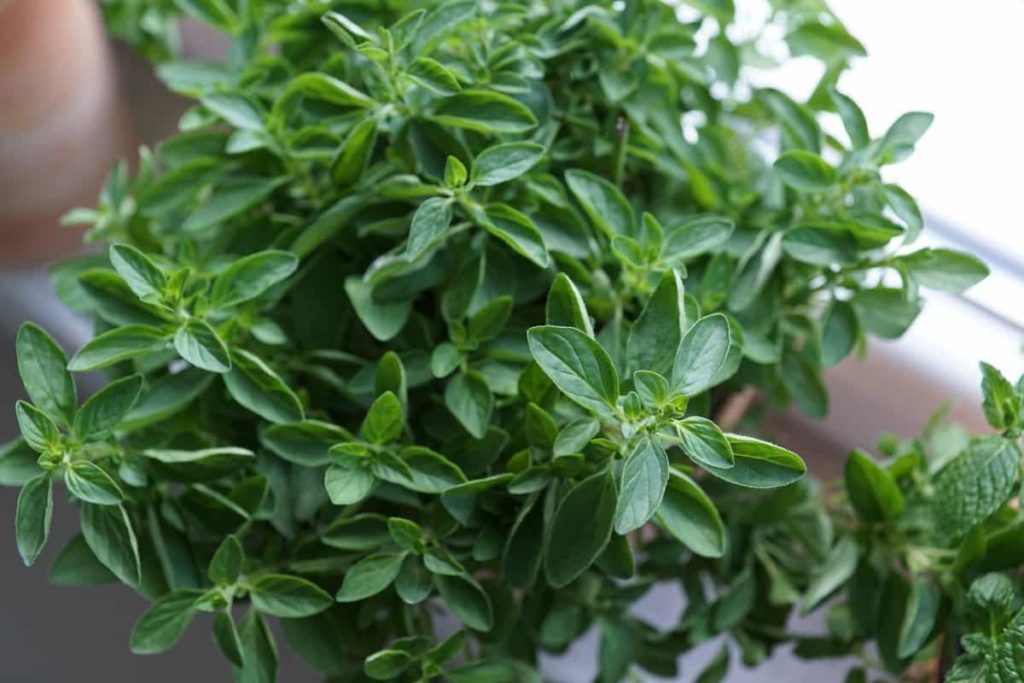The gardening experience in Los Vegas can be challenging and, at times, even frightening. This region is a high desert that experiences significant temperature swings between the day and night. It receives significant sunshine and has a low average humidity level. These characteristics, when added to quick and drastic climatic shifts, an early warm-up, a late fatal frost, a short growing season of 90 to 100 days, and poor soil conditions, compound the difficulties we have in gardening about soil, water, and temperature.

Before growing a garden in your backyard, you must be familiar with a few things. There are several things to consider, including temperature, the kind of plant you want to grow, and the type of soil you want to use. The research you conduct at the beginning of the gardening process will be crucial to its long-term success.
We have outlined the required activities and preparations to successfully plant your garden in the following paragraphs. Below we will learn about Las Vegas backyard gardening, when to plant vegetables in Las Vegas, the climate and hardiness zones of Los Vegas, when to start planting in Las Vegas, and a step-by-step guide to starting a backyard garden in Las Vegas.
About the climate and USDA hardiness zones of Los Vegas
Gardening in Las Vegas or other cities might be challenging if you don’t know how to grow your food. Gardeners can use growing zones to determine which plant species will do well in their particular climate and geographical location. As a result of the city’s year-round exposure to temperatures that range from very hot to extremely cold, Las Vegas is divided into two distinct growth zones. Las Vegas hardening might be a confusing process for those new to the city.
If you reside in Nevada, you are fortunate enough to be a part of a state with 13 distinct planting areas. The state of Nevada has zones ranging from 4a to 10a. The mountainous regions of the state may see temperatures as low as -30 degrees Fahrenheit, in contrast to the more southern parts of the state, which enjoy a fairly warm winter with lows that are well above freezing (-34 C.). Being familiar with your zone is essential if you want any gardening success in this state.
The United States Department of Agriculture (USDA) states that growth zone 9a encompasses Las Vegas. The USDA determines the growth zones for the country based on the coldest average temperature in each location. Meanwhile, according to the Sunset climatic zone classification, Las Vegas is located in growth zone 11. The growth season, amount of rainfall, intense heat and cold, wind speed, and humidity are all considered when determining a region’s Sunset climatic zone.
You should never forget to double verify the zoning system when purchasing plants or seeds. Some plants are hardy enough to thrive outside of the growth zone advised for them. Still, you may need to take additional caregiving measures, such as relocating them to a cooler, shadier location during the warmer months or placing them in a warm greenhouse during the winter.
Las Vegas backyard gardening: A step-by-step guide to starting a backyard garden in Las Vegas
Choose the ideal spot in your backyard
The location of your garden should be your second consideration while planning it out. In general, it’s best to choose a location that receives at least 6 – 8 hours of direct sunlight each day. This involves planting in areas not directly shaded by buildings or trees. The side of your land that faces south is often the optimal location for a vegetable garden; however, the east- or west-facing sides of your property can also be used.
If growing your plants in the full sun is impossible, you should try growing them in containers that can be moved about to follow the sun’s path. You can also rent space from a community garden in your area, which will provide you with both the space and the light to grow your plants successfully. Your location for your backyard garden must provide you with convenient access to water.
For their development to be supported, plants need a constant water supply. Your plants will perish if the soil is allowed to get too dry or if it is permitted to become waterlogged. Both of these circumstances should be avoided at all costs. The location must have access to either a garden hose or, if you would like, an automatic watering system. Drip watering is used often in our region because it lessens the amount of water lost due to evaporation and provides water to the roots of plants in a manner that is both water-efficient and weed-suppressing.
Soil preparation in the selected spot
Temperature alone isn’t enough when determining a plant’s survivability in this environment. Low humidity, drying winds, and the soil’s physical and chemical qualities affect plant performance and how they should be rinsed. This is why appropriate watering is so important. Heavy clay soils lacking organic matter and nutrients represent most of our soils. They also have an alkaline pH—soil sodium salts and poor drainage or a high water table damage soils in Las Vegas.
In case you missed it:

Due to the high alkalinity and semi-aridity of the soil, soil alteration is a significant issue in this region. Deep sands can be found in various locations. Both kinds of soils can be reclaimed with the help of organic materials. Gypsum can be applied in high amounts to promote soil aggregation and improve drainage in areas with sodium-affected soils. Clay and sandy soils can benefit from adding organic material to increase drainage, ventilation, and moisture and nutrient retention.
Once drainage is improved, soluble salts can leak underneath the root system. On the other hand, drainage issues are often deep-seated and exacerbated by an elevated water table that is difficult to address. In the worst-case scenario, drains made of tile or gravel can be required. The kind of organic matter will influence the rate of organic matter accumulation. A maximum of 3 to 4 inches is recommended for flower and vegetable gardens and no more than 2 inches for new grass areas.
These gardens benefit from the yearly addition of organic materials. The soils of Las Vegas are also deficient in nutrients and nitrogen, necessitating the addition of phosphorus, potassium, and iron. Because of our high pH, plants cannot use iron in our soils. Iron deficiency or chlorosis should be on the radar of any local gardener. Pin oak, silver maple, hawthorns, and roses, which need a lot of iron, will function badly.
Plant your backyard garden
When the design is complete, it’s time to choose the style and size of your garden beds. Raised beds are visually appealing, and they make gardening simpler for you. There are several advantages to growing food in blocks or beds instead of individual rows. From each side, the bed should be 3 to 4 feet broad. To avoid treading on the plants while moving around the beds, they should be 8 to 10 feet long.
Start with a few plants and allow each room to flourish. Overcrowding can be a problem for newly germinated seeds, transplants, and fully developed plants. You can arrange your plants in rows or a grid arrangement in the garden beds. The idea is to make the growth area as large as possible while minimizing the number of paths. The time and money you save by merely fertilizing and amending the soil in the planting area is also an advantage.
Once you’ve completed the foundation, it’s time to begin planting. Generally speaking, most of the seed packs provide simple planting instructions. You’ll learn how to plant by doing if you give it a go. The seed width should be planted 3-4 times deeper than the seed itself unless otherwise stated on the seed box.
Please ensure the seeds are completely covered with soil and water them properly to avoid exposing them. When transplanting young plants, dig a hole twice the root ball’s diameter. Your plant’s development will be boosted if you rake up the dirt and sprinkle it with organic fertilizer. Cover the roots with soil. After transplanting your plants, give them a little watering.
Water your backyard garden
Given the frequency with which droughts strike in this region, access to water is another element that might be restrictive. It is essential to choose plants based on their capacity to withstand dry conditions and thrive with just a little water. The gardener is responsible for acquiring the knowledge necessary to water carefully and effectively utilizing drip watering.
Proper watering methods or timing is required to enable the deep water penetration that is essential for your tight clay soils. Usually, you should ease into your on-off pattern. It is fairly typical to overwater newly planted seeds and plants. When water is applied to grass areas at too rapid of a rate or for too long of a period, the outcome is overwatering and wasteful runoff.
There will be little rain and humidity in this location, so the gardener should plan accordingly. Many dry winters have low precipitation levels, dry air, and abundant sunshine. Evergreens, especially conifers and broadleaf evergreens, need winter watering. Even if it may seem that there is no way out of this predicament, gardeners do not have to give up and ask, “What’s the point?” After figuring out how to adapt to the weather, improve the soil, and make the most of the available water, there is a silver lining.
Gardeners can produce some of the country’s most beautiful flowers, fruits, vegetables, and grass due to the abundant sunlight; nevertheless, this also causes them to face certain challenges. This high-intensity results in plants that are strong and healthy. Because of the warm days and chilly nights, the grass and crops need a cool-season to grow well. Plant diseases are less likely to thrive in a reduced humidity environment, which reduces the severity of the cold and the intensity of the heat.
Fertilize your backyard garden
Fertilizers such as nitrogen, phosphorous, and potassium are essential for plants’ growth. Plants need nitrogen to grow. Green and leafy plants are the results. In the correct quantity and time, nitrogen can help plants get off to a flying start, resulting in a bumper crop. Using too much nitrogen may cause plants to grow too quickly, become lanky, and interfere with the formation of flowers and fruits in vegetables such as tomatoes and cucumbers. Be aware of this when using it.
On the label of commercial fertilizers, there is a code that shows you how much nitrogen (N), phosphorus as P2O5 (P), and potassium as K2O you’re getting by weight. A 5-10-15 fertilizer, for example, comprises 5% nitrogen, 10% phosphorus, and 15% potash. It’s a complete fertilizer since it has all three of the essential elements in it. In an inadequate fertilizer, just one or a few of the most important nutrients are present.
For example, 46-0-0 is a nitrogen fertilizer with no phosphorus or potassium, whereas 3-15-0 is a nitrogen and phosphorus fertilizer with 15% nitrogen and none of the phosphorus. Tests of your soil’s nutrients may help determine whether or not your land is lacking in one or more nutrients. Las Vegas soil lacks organic matter and general fertility; therefore, apply a balanced fertilizer before planting.
Instead, you can include well-aged manure or compost into your soil as a nutrient source that is gently released into the soil over time. Pre-plant fertilizer should never have fresh manure or pet waste. They can spread hazardous germs that can cause food poisoning in the soil. Excessive levels of nutritional salts can burn tender young plants in new manures.
The inorganic version of natural organic fertilizers is derived from the decomposition of live sources. There are commercially available synthetic fertilizers made from inorganic sources. It makes no difference to the plant where the nutrients come from since they are all absorbed in their inorganic form. A commercial granule fertilizer and decomposed compost contain the same amount of nitrogen (N) that plants can use.
The distinction lies in that nutrients, particularly nitrogen, that come from natural sources are released gradually over time and are more likely to be absorbed by the roots of plants as opposed to being leached into groundwater. Slow-release synthetic fertilizers are also available and can last the whole season. The concentration of nutrients in natural organic fertilizers is lower than in synthetic fertilizers, and some are rich in just one or two of the key nutrients. Still, many offer the additional advantage of increasing soil structure and water-holding ability.
It might seem challenging to satisfy the nutritional requirements of your plants with natural organic fertilizers because of their low and frequently restricted nutrient content, but it doesn’t have to be. Even if the balance is off, strong, robust plants will result. To be successful in backyard gardening, it’s essential to understand the fundamental nutritional requirements of the plants you are growing and to watch out for any signs of probable deficiency.
Mixing and matching different items can be essential to suit specific plants’ demands. Since of the high alkaline pH of most Las Vegas soils, adding lime isn’t recommended because it might reduce the number of nutrients available to your plants. Gypsum does not increase the fertility, pH, or structure of sandy soils in Las Vegas. Avoid pre-mixed commercial products that incorporate these substances as a source of calcium.
When utilizing organic fertilizers and additives, here are some suggestions to keep in mind:
The traditional use of commercial synthetic fertilizers differs conceptually from organic fertilizers. Organic fertilizer helps soil microbes break down organic materials and release plant nutrients. The organic matter you add to your soil is a slow-release source of nutrients that help sustain soil life and improves your soil’s chemical and physical structure.
In the autumn, incorporate manure and/or compost into your soil. Soil bacteria can degrade the organic debris and release the nutrients in time for spring planting. For manure, autumn integration is very significant; salts are leached from manure, weed seeds are reduced in viability by fall addition, and potentially dangerous bacteria are eliminated.
When to start planting your backyard garden in Los Vegas?
When to plant anything depends on how cold-resistant the plant is. It is possible to plant hardy crops in the spring, even if the soil has not yet been prepared. 2 to 4 weeks before the average date of the last deadly frost, which occurs around May 15, semi-hardy vegetables can be sown. Because cole crops, which include broccoli, cauliflower, Brussels sprouts, and cabbage, are sensitive to heat and thrive in the cold rather than hot weather, these vegetables should not be planted beyond the middle of May.
Vegetables susceptible to frost and need to be protected from the cold cannot be planted until after the final date that frost is expected; otherwise, they will perish in the cold. Frost-sensitive vegetables may be planted outdoors once the danger of frost has gone, either as transplants or from seed grown inside between March and April. When using hot caps, row covers, or any other kind of protection, it is possible to transfer seeds and seedlings earlier.
When the soil is warm, often in the middle to the latter part of February, seeds of summer crops such as squash, cucumbers, watermelon, maize, and beans may be planted most successfully immediately in the garden. As soon as the earth thaws in January, it would help if you started planting your peas. Tomatoes, peppers, and eggplants should be planted in early December.
Once the threat of frost has passed, often around the middle of February, you can move these plants outside to finish growing. You also have the option of purchasing miniature plants. It is possible to start seeding cabbages, kale, and broccoli as soon as the ground can be worked. There is also the option of purchasing smaller plants or starting the seeds inside at the beginning of December.
Vegetables that can be grown best in Las Vegas
Tomatoes, potatoes, cantaloupe, cucumbers, eggplants, onions, okra, peppers, squash, maize, beans, asparagus, kale, and many more vegetables can all be grown successfully in the backyards of Las Vegas homes.
In case you missed it: Growing Cucumbers in Pots from Seed, Cucumber Care

Fruits that can be grown best in Las Vegas
Apples, pears, cherries, plums, peaches, nectarines, persimmons, jujubes, fig trees, grapes, guava, pomegranate, citrus, and many more types of fruits can all be grown successfully in the backyards of Las Vegas homes.
In case you missed it: Growing Dwarf Lemon Trees – In Containers, Pots

Flowers that can be grown best in Las Vegas
Blanket flowers, Russian sage, coreopsis, yarrow, coneflowers, daylily, hollyhocks, shasta daisy, hostas, petunias, dahlias, and many more types of flowers can all be grown successfully in the backyards of Las Vegas homes.
In case you missed it: New York Backyard Gardening: How to Start with Vegetables, Flowers, Herbs, and Fruits at Home

Herbs that can be grown best in Las Vegas
Sage, thyme, rosemary, oregano, basil, cilantro, parsley, chives, and many more types of herbs can all be grown successfully in the backyards of Las Vegas homes.
In case you missed it: Los Angeles Backyard Gardening: How to Start with Vegetables, Fruits, Flowers, and Herbs at Home in California

Conclusion
Gardening in Las Vegas may appear difficult given the surrounding desert climate; however, as shown in the previous sections, it is much simpler. Once you get the basics down, planting in your Las Vegas backyard may be a breeze, but growing in a desert environment requires some additional know-how.
We can help you with your gardening needs, whether you’re an expert or new to Las Vegas. Refer to this guide if you want assistance locating the appropriate soil combination for the plants in your desert garden, are unsure how to set up your watering system, or require guidance on dealing with a pest.
- Gardening Techniques in Planting Vegetables
- Where to Place Indoor Plants in Your Home
- How to Grow Tomatoes Organically at Home: A Comprehensive Guide
- Organic Gardening on a Budget: Low-Cost Methods and Materials
- Gongura Seed Germination and Planting Methods
- Cabbage Seed Germination and Selection
- Broccoli Seed Germination and Selection
- Asparagus Seed Germination and Variety Selection
- Seasonal Flower Gardening: Best Practices for Spring, Summer, Fall, and Winter
- How to Grow Hibiscus from Flower
- Plantation Ideas for Home Decoration: A Beginners Guide
- Flower Garden Designs and Layouts for Beginners
- Planting and Spacing Techniques in Papaya: A Beginner’s Guide
- Growing Gold: Essential Techniques for Planting Pineapples
- How to Make Kalanchoe Plant Bushy: Home Remedies and Solutions
- 11 Reasons Why Your Gardenia is Not Blooming: Home Remedies and Solutions
- Eco Elegance: The Guide to Designing a Drought-Tolerant Landscape
- Gardening on a Slope: Strategies for Hillside Landscaping
- Nourish and Flourish: Top Organic Mulches for Thriving House Plants
- Everything You Want to Know about Indian Mogra Flower: Discover Uses and Growing
- Green Thumb Success: Expert Tips for Cultivating Greenhouse Pumpkins All Year Round
- Maximize Growth & Flavor: The Ultimate Guide to Companion Planting in Herb Gardens
- How to Control Rhododendron Problems Naturally: Home Remedies and Organic Ways to Fix Them
- Natural Magic: The Remarkable Benefits of Cinnamon for Plants
- Best Steps to Revive Dying Tulip with Natural and Organic Treatment
- 10 Reasons Why Your Angel Trumpet is Not Blooming: Remedies and Treatment
- How to Fix Periwinkle Leaf and Flower-Related Problems: Natural Remedies and Solutions
- How to Fix Zinnias Leaf and Flower Problems: Discover Natural and Home Remedies
- Organic Steps to Induce Lemon Tree Flowers: A Comprehensive Guide
- Bloom Booster: Crafting the Perfect Homemade Bougainvillea Fertilizer
- Optimizing Growth: A Guide to Applying NPK Fertilizer for Potted Plants
- 10 Best Homemade Fertilizers for Rubber Plant: DIY Recipes and Application Method
- How to Boost Female Pumpkin Flowers: Effective Steps for More Flowers and High Yields
- Transform Your Indoor Garden: Top Benefits of Pink Salt for Houseplants
- 10 Best Homemade Fertilizers for Peacock Plants (Calathea): Easy DIY Guide
- Unlock Blooms: 9 Reasons Why Your Potted Chrysanthemum is Not Blooming